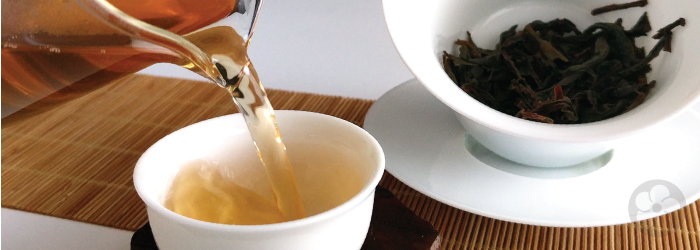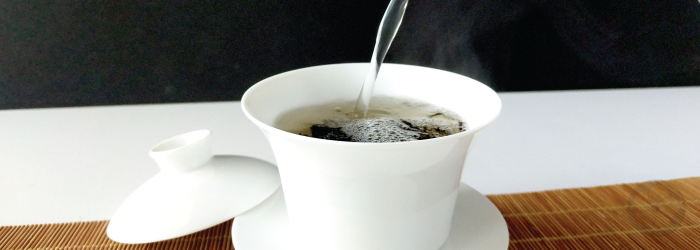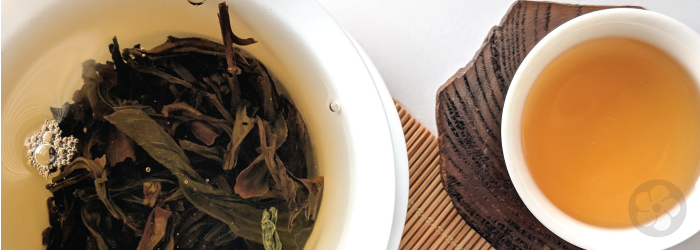Brewing Tips: Balancing Time & Temperature

Whether you’re an experienced tea drinker or just getting started, you’ve probably heard some advice about controlling the temperature of your water. But recommended steeping instructions often vary, with differences between styles, vendors, and even individual teas. How can you be sure you’re getting the best flavor in every brew?
A variable temperature kettle is one way to ensure you’re always using the right temperature for the tea you’re brewing, but these complex appliances can be an expensive investment, and don’t pack easily for travel. They’re also a very modern invention - countless generations of tea drinkers have learned to brew tea well without the aid of precise temperature control, and you can too!
In fact, we prefer to allow variations in our water temperature, and use basic kettles without temperature settings for tastings in our shop. This allows us to adjust the brew according to the ambient temperature, the brewing vessel, and the individual’s palate. One of the easiest methods we use to control the brew without an exact water temperature reading is to adjust the steeping time, or the amount of time the leaves steep in the hot water.
Temperature
Generally, temperatures below boiling are recommended for almost all Camellia sinensis teas, while a full rolling boil is reserved for herbal teas or tisanes. The lowest temperatures are used for green and white teas, while darker or more compressed teas require more heat. Essentially, high temperatures help to extract flavor more quickly, but must be balanced to avoid ‘overcooking’ the leaves. Temperatures that are too high create a stew of the leaves, and begin to extract vegetal flavors that can quickly become bitter or astringent, especially from low quality, mass produced teas.
Find temperature guidelines for all tea types >>
Ideally, the water is removed from the heat before it reaches a boil, but if your water is allowed to boil fully, simply wait for it to cool somewhat before pouring it over your tea leaves. Pouring the hot water into a cold server or cup can help speed the cooling process, but if you’re in a rush, you can even add a small amount of cold water first, before topping up with hot water. This will reduce the temperature quickly, but can easily go too far in the opposite direction and make the brew too cool.
Once you’ve got your water to a middling temperature, start your brew and watch the leaves for signs that they’re opening up or rehydrating. With teas that are tightly rolled or twisted, this is a straightforward and easy-to-observe expansion, but some teas are more subtle. If your leaves are pressed flat as in Dragonwell green teas, or lightly twisted like an oolong from the Phoenix Mountains, look for a change in the color of the leaves. They will start to look mottled in color as the water permeates the surface, and reveal brighter colors as the leaf rehydrates. This process will happen more quickly with very hot water, and more slowly with cooler temperatures.
Steeping Time
As with temperature, each style of tea comes with unique instructions for how long to leave the tea in the water before it is ready to drink. In the context of traditional Chinese brewing methods, the most delicate green teas require no more than 30 seconds, while darker styles can be left to steep up to 2-3 minutes without becoming ‘overcooked’.
Many tea drinkers use steeping time as the primary method of adjusting the strength of their brew, but this can result in sub-par flavor, as most bitter compounds are released later in the brewing process. Short steeps extract the volatile compounds that make up flavor and aroma, without extracting as much bitterness and astringency. Instead of one long brew, Chinese brewing traditions use multiple short infusions of the same whole leaf to extract quality flavor while avoiding bitterness. If a short steep seems flavorless, using more leaf will increase the intensity without requiring longer steeps.
Since high temperatures cause the tea leaves to rehydrate and release flavor more quickly, short steeping times can help keep the flavor balanced if your water is too hot. On the other end of the spectrum, water that is cooler than recommended will require more time to permeate the leaf and extract flavor. Notably, even cold water can extract plenty of flavor if given enough time, as in our recipe for cold brewed iced tea. Using the changing color or shape of the steeping leaves as a guide, adjusting your steeping time is actually very simple. With a little bit of practice, you’ll be able to easily gauge the strength of any brew before you even take your first sip.
Playing with these parameters of temperature and time is the best way to fully understand any given tea, and ultimately check the quality. For us, the best teas are the ones that offer a lot of flexibility, and taste good no matter how they’re brewed. But many connoisseurs take a special joy in finessing their brewing technique to draw incredible and complex flavor from teas that are difficult to get right. Either way, experimenting is sure to help you discover the brew that’s perfect for you.
Do you stick to recommended brewing guidelines, or prefer to go off-script? Let us know in the comments below!
Sign up for our newsletter to get blog updates in your inbox!







Comments on this post (0)